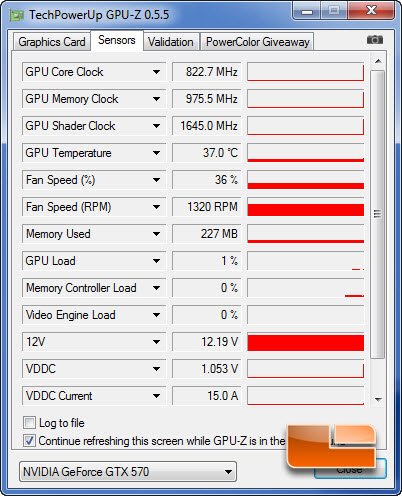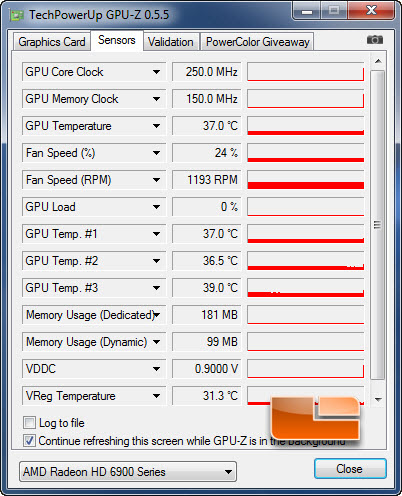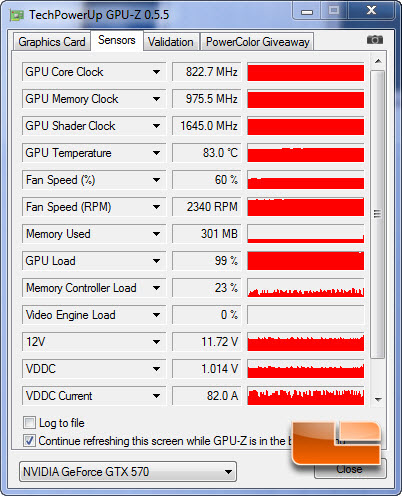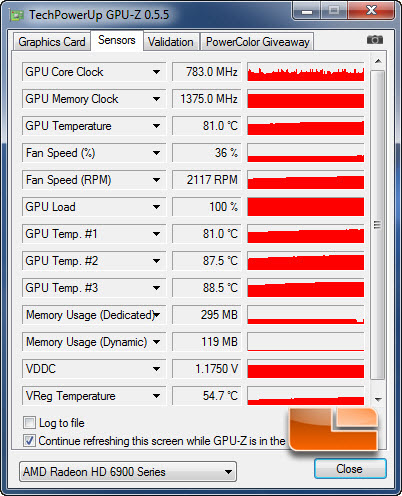EVGA GeForce GTX 570 HD Classified Video Card Review
Temperature Testing
We wanted to start this section off with a bit of a disclaimer since the room that we have our test rig in was hotter than normal mainly due to extreme weather getting as much as 41C. Here in Missouri we have broken several records for hottest days and our air conditioning cannot keep up which will affect the ambient temperatures in the testing room and therefore show higher than normal readings. The ambient in the test room was 26.5C which is is about 5C warmer than normal.
EVGA takes an excellent card and sprinkles 12% of overclocking goodness on the card. This card also has that 6 + 8-pin PCI-E power plug for more juice but that also can lead to more heat in the VRM’s, Cap’s, and resistors as the card does its power management.
To set our baseline we allowed the system to just sit at the desktop with GPU-Z running for 15 minutes and captured the readings.

The FERMI chips do save power and reduce thermals when only running in 2D mode which allows this card to drop down to 37C or below in a room with a lower ambient. We were not sure if it was the new NVIDIA drivers or the new 5.5 version of GPU-Z but typically these cards throttle down the clocks when running in 2D, however you can see according to this version of GPU-Z they are still running at the default speed. Precision showed the same numbers so I am assuming it must be this particular flavor of GeForce GTX 570 from EVGA that maintains full clock rate even during idle time. At 37C in a hot room I would say it the card idling with full clocks is actually pretty impressive.
ASUS ATI Radeon HD 6970 card idle temperature:

In keeping with our comparison here is the HD6970 tested on the same day in the same room on the same bench. Once again the idle is 37C that probably has more to do with the high ambient temperature in the room than anything with either of these cards.


Here again are the results from our HD 6970 sample also under furmark 1.9.1. Playing a few games at maximum settings and resolutions for well over 15 minutes (I was dominating and forgot I was testing for a moment) we saw maximum temperatures range from 65C – 74C. It is no secret that the AMD cards run cooler than the NVIDIA cards but the GTX500 series has significantly narrowed the gap from the egg cooker GTX 400 series.
As a final test we put in our ear plugs and forced the fan to 100%. You would be amazed about how many more dBA was generated in that last 40% but it did make a nice dent in performance dropping our max temp 83C down to 72C which is very impressive for what appears to be a reference designed NVIDIA cooler on this factory overclocked card.

Comments are closed.